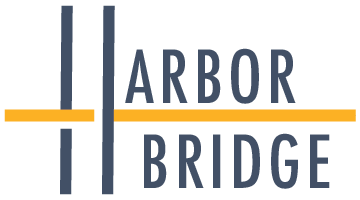The Leadership Cha Cha: Choosing When to Step In and When to Step Back
Picture this: Angela is a seasoned manager whose leadership demonstrates not just her company’s values – teamwork and community – but also her deeply held belief in fostering individual success. She believes that leadership is about partnering and empowering her team.
Now imagine a scenario where Angela’s team is preparing a new initiative to present to senior leadership. This time, Angela chooses to give Nishan, a junior associate, the opportunity to spearhead this project. The decision to give Nishan full autonomy reflects Angela’s values, but it also poses a risk: How effectively can a less experienced team member accomplish such a complicated and important task? This brings us to a critical point in leadership: knowing when to direct and when to step back.
By choosing to give Nishan the reins, Angela displays her preference towards a hands-off approach, but the question is whether Angela’s choice is strategic or is she merely defaulting to her leadership comfort zone and fearing micromanagement.
Often, leaders shy away from a directive approach because they fear offending team members by being overly controlling or micromanaging their tasks and being perceived as authoritarian. However, this hesitation can be counterproductive in situations where clear guidance and structured support are needed. Newer team members or those facing unfamiliar tasks can benefit significantly from directive leadership, as it gives them the support they need to succeed. Understanding when and how to apply a directive approach—without falling into the trap of micromanaging—is a delicate balance that requires an understanding of individual team members and the specific context of the task.
Situational Leadership, a model that adapts leadership style according to an individual’s competency, confidence and commitment to tasks, provides a framework for this decision-making process. In Angela’s scenario, her default leans towards a hands-off style, which would be appropriate if Nishan is competent, confident, and committed to handling the project. However, since Nishan is less experienced and may lack commitment and confidence, a more directive approach that guides him through the process would actually be the more supportive choice.
To determine if a directive approach is warranted, consider these cues:
Team Member’s Experience: Is the team member new or inexperienced in the task at hand?
Ability: Has the team member demonstrated their ability to accomplish the task, or are you basing your assessment on their future potential?
Task Complexity: Is the task highly complex or technical, requiring specific expertise or knowledge?
Previous Performance: Have there been issues with the team member’s performance in similar tasks before?
Confidence: Is the team member hesitant to take on this task or asking for validation or reassurance?
The effectiveness of Angela’s leadership—and, by extension, the appropriateness of her chosen style—hinges on her ability to accurately assess the situation and Nishan's needs. A directive approach would serve as a supportive and beneficial tool for Nishan. By providing clear guidance, structured goals, and regular feedback, Angela can help Nishan navigate the complexities of the task, build his confidence, and develop his skills more effectively.
This directive approach, when applied thoughtfully, does not stifle Nishan’s creativity or independence; instead, it serves as a scaffold that he can use in his growth and development. When someone is still learning the ropes, the clarity and structure that come from directive leadership are invaluable.
Leaders like Angela need to recognize that being directive, in certain contexts, is not about exerting control but about offering support. It’s about understanding the individual’s stage of development and tailoring the leadership style to facilitate their growth. This isn’t just a story about Angela – it’s a situation many leaders face as they look to delegate, empower and provide support to their teams. Leaders must extend beyond their preferred approach and objectively assess what is best for their direct report in each unique situation.
